Energy Star V3 Homes – HVAC Lessons Learned – Recorded Webinar CEUs
In this webinar, Ryan Miller, Program Manager of Advanced Energy’s Quality-Assured Professional (QAP) for HVAC program, one of two national HVAC Contractor credentialing programs for the ENERGY STAR® Certified New Homes program v3.0, will present lessons learned from the HVAC Contractor owner/operators the program has worked with during its first year in operation.
Topics include:
1. The changing role of HVAC Contractors working in the ENERGY STAR® program. What HVAC Contractors are required to do and should be doing.
2. How to save time, money, and increase customer satisfaction by performing quality ENERGY STAR® work. Tips for developing internal quality control plans and procedures will be provided.
3. Training crews on performing ENERGY STAR® jobs. What they need to know, how you can train them, and resources available to them that can decrease their time and cost on jobs while increasing quality.
4. Marketing your company as a (ENERGY STAR® v3.0 required) credentialed HVAC Contractor. Tips for setting your company apart from others in the market.
5. How to evolve your role with Builders and Raters from receiving design plans to having significant input in the upfront design process. How acting as an HVAC design advisor on ENERGY STAR® jobs, not just an installer, can yield across the board savings for all parties involved and reduce comfort issues.
Target Audience: HVAC Contractor owner/operators currently working in or interested in working in the ENERGY STAR® Certified New Homes program. Prior experience in the ENERGY STAR® program is not necessary
Recording can be viewed here
Please take a min to fill out this survey after viewing. Thank you!
Ryan Miller: Project Manager II and Quality-Assured Professional (QAP) Program Manager, Advanced Energy Corporation
Ryan Miller joined Advanced Energy in 2011 to manage residential new construction projects for utility and other clients from across the country. As a certified Project Management Professional (PMP) and Six Sigma Black Belt, Miller brings significant project management and business process improvement experience to the organization and its customers.
In 2012, Miller managed the development and launch of the first nationwide residential energy efficiency program in Advanced Energy’s 30-plus year history with the Quality-Assured Professional (QAP) program. As Program Manager, Miller is responsible for the managing the strategic direction of the program as well as the day-to-day administration of the staff and program participants.
Prior to joining Advanced Energy, Miller was the Operations Manager for a home performance contractor in Durham, NC, where he learned energy efficiency improvements and HVAC contracting from the ground-up. Managing the office and warehouse functions of the company, Miller made significant operational and financial improvements to the organization. Prior to this experience, Miller served as Business Process Manager for Texas Electric Cooperatives (TEC) in Austin, TX. In this position, Miller again tackled business and system improvement projects throughout the state, working closely with the statewide electric cooperatives and other utilities to lower costs, improve efficiencies, and lead training initiatives.
AIA & GBCI CEUs In order for CEUs to be processed we will need a small donation based on what value you found on the course. As a 501(c)3 charitable organization (view our details), we deliver green building education courses throughout the Midwest at minimal cost and at no profit. Please support us to help keep these going. Your donation to the Green Home Institute may be tax-deductible. Please check with your accountant or tax attorney for details.

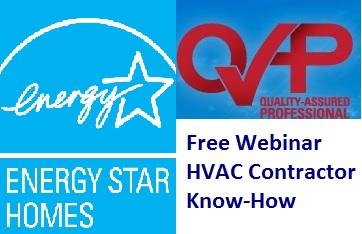
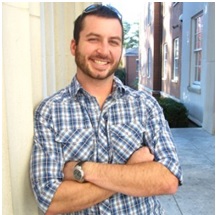

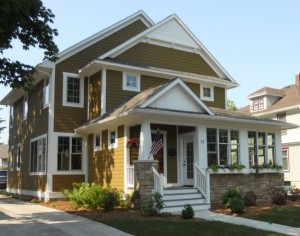 When Brian and Jeremy vanEyk (Vice President) were asked about their commitment to building LEED, they responded that Cottage Home is committed to utilizing healthy, affordable, efficient, and durable construction practices that are already above code, energy star and even LEED at times. Brian says he considers LEED only one of the many tools in his toolbox. Other such tools include creative design, customer service, careful selection of materials, and creating a sense of place. In order to make it simple for the customer, Cottage Home uses a fixed price prior to starting construction which already includes LEED qualifications. This allows some of the cost of LEED certification to be absorbed by both the customer and through the Cottage Homes marketing budget. Brian believes this method works due to his design and construction teams working together throughout the construction process, which creates a feedback loop that fosters constant improvement. Including LEED certification into the final cost helps facilitate more sales than presenting each option with separate pricing.
When Brian and Jeremy vanEyk (Vice President) were asked about their commitment to building LEED, they responded that Cottage Home is committed to utilizing healthy, affordable, efficient, and durable construction practices that are already above code, energy star and even LEED at times. Brian says he considers LEED only one of the many tools in his toolbox. Other such tools include creative design, customer service, careful selection of materials, and creating a sense of place. In order to make it simple for the customer, Cottage Home uses a fixed price prior to starting construction which already includes LEED qualifications. This allows some of the cost of LEED certification to be absorbed by both the customer and through the Cottage Homes marketing budget. Brian believes this method works due to his design and construction teams working together throughout the construction process, which creates a feedback loop that fosters constant improvement. Including LEED certification into the final cost helps facilitate more sales than presenting each option with separate pricing.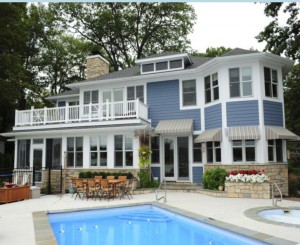 Since many homeowners today are educated and concerned about sustainability and environmental issues, many take time to study the details of LEED on the website of Cottage Home and take comfort in knowing LEED is a third party certification. Clients are aware of LEED’s achievements and credibility, and often wonder about how changes to the house affect the LEED certification level. Much of Cottage Home’s customer base is from the Chicago area where LEED is prevalent in their office buildings, and a result, many clients have experienced the advantages offered by LEED construction firsthand. These clients have often already invested in commercial LEED projects and are now ready to transition these same high standards to their personal lives. Jeremy decided to experience the benefits of LEED firsthand and chose to have his
Since many homeowners today are educated and concerned about sustainability and environmental issues, many take time to study the details of LEED on the website of Cottage Home and take comfort in knowing LEED is a third party certification. Clients are aware of LEED’s achievements and credibility, and often wonder about how changes to the house affect the LEED certification level. Much of Cottage Home’s customer base is from the Chicago area where LEED is prevalent in their office buildings, and a result, many clients have experienced the advantages offered by LEED construction firsthand. These clients have often already invested in commercial LEED projects and are now ready to transition these same high standards to their personal lives. Jeremy decided to experience the benefits of LEED firsthand and chose to have his Building on the lake front comes with complications such as extreme wind loads, humid changes, temperature fluctuation, and other variables. To overcome these challenges, Cottage Home uses high performance home measures to control the entire process though design, build, and some maintenance which allows more control of green features. Cottage Home designs and builds what is right for each particular home which may result in homes varying in different HVAC, insulation, passive solar heating, and various climate control systems. One particular feature that is commonly used in these homes, including Jeremys, is an ERV (Energy Recovery Ventilator). An ERV automatically exhausts stale air from the inside of the house and replaces it with fresh air from the outside. Another key feature used in many of the homes is a geothermal system. There are a few different types used, but all contribute to the energy efficiency of the homes in some way. Several techniques are used to increase water efficiency in the homes, such as tankless water heaters, which only heat water when necessary, water collection systems to help with sprinking and irrigation, and faucets and showerheads that work with less water than traditional ones. Insulation, as well as materials such as flooring, home furnishings and walls are all aspects that need to be carefully considered when building these homes.
Building on the lake front comes with complications such as extreme wind loads, humid changes, temperature fluctuation, and other variables. To overcome these challenges, Cottage Home uses high performance home measures to control the entire process though design, build, and some maintenance which allows more control of green features. Cottage Home designs and builds what is right for each particular home which may result in homes varying in different HVAC, insulation, passive solar heating, and various climate control systems. One particular feature that is commonly used in these homes, including Jeremys, is an ERV (Energy Recovery Ventilator). An ERV automatically exhausts stale air from the inside of the house and replaces it with fresh air from the outside. Another key feature used in many of the homes is a geothermal system. There are a few different types used, but all contribute to the energy efficiency of the homes in some way. Several techniques are used to increase water efficiency in the homes, such as tankless water heaters, which only heat water when necessary, water collection systems to help with sprinking and irrigation, and faucets and showerheads that work with less water than traditional ones. Insulation, as well as materials such as flooring, home furnishings and walls are all aspects that need to be carefully considered when building these homes.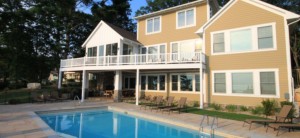 As leaders in the industry we asked Brian and Jeremy what they saw in the future of design and construction. Jeremy believes that being able to evaluate the effectiveness of high performance systems and insulation through energy bills is important. Along with water collection systems to reduce storm water runoff and help irrigate the lawn. Brian agrees that we should have a system to allow clients to ensure they are getting the most effective homes. He foresees homes that can be manipulated to meet the client’s needs at any given time. An example of this would be homes with the ability to accommodate a family of four, which can then transition to accommodate sleeping arrangements for twenty. Along with being able to better meet a client’s needs, he would like to see energy loads distributed to only sections of the house in use, as well as the ability for clients to control how energy is used throughout the home (on site and from satellite locations). Cottage Home sees one challenge to moving forward with these ideas is getting sub-contractors to approach basic air sealing, insulation, proper HVAC sizing, and design aesthetics with an effective mindset. Cottage Home has established themselves as innovators and leaders in the design of luxury LEED lake front homes. They continue to partner quality, design and the environment hand in hand to produce sustainability along our beaches.
As leaders in the industry we asked Brian and Jeremy what they saw in the future of design and construction. Jeremy believes that being able to evaluate the effectiveness of high performance systems and insulation through energy bills is important. Along with water collection systems to reduce storm water runoff and help irrigate the lawn. Brian agrees that we should have a system to allow clients to ensure they are getting the most effective homes. He foresees homes that can be manipulated to meet the client’s needs at any given time. An example of this would be homes with the ability to accommodate a family of four, which can then transition to accommodate sleeping arrangements for twenty. Along with being able to better meet a client’s needs, he would like to see energy loads distributed to only sections of the house in use, as well as the ability for clients to control how energy is used throughout the home (on site and from satellite locations). Cottage Home sees one challenge to moving forward with these ideas is getting sub-contractors to approach basic air sealing, insulation, proper HVAC sizing, and design aesthetics with an effective mindset. Cottage Home has established themselves as innovators and leaders in the design of luxury LEED lake front homes. They continue to partner quality, design and the environment hand in hand to produce sustainability along our beaches.



